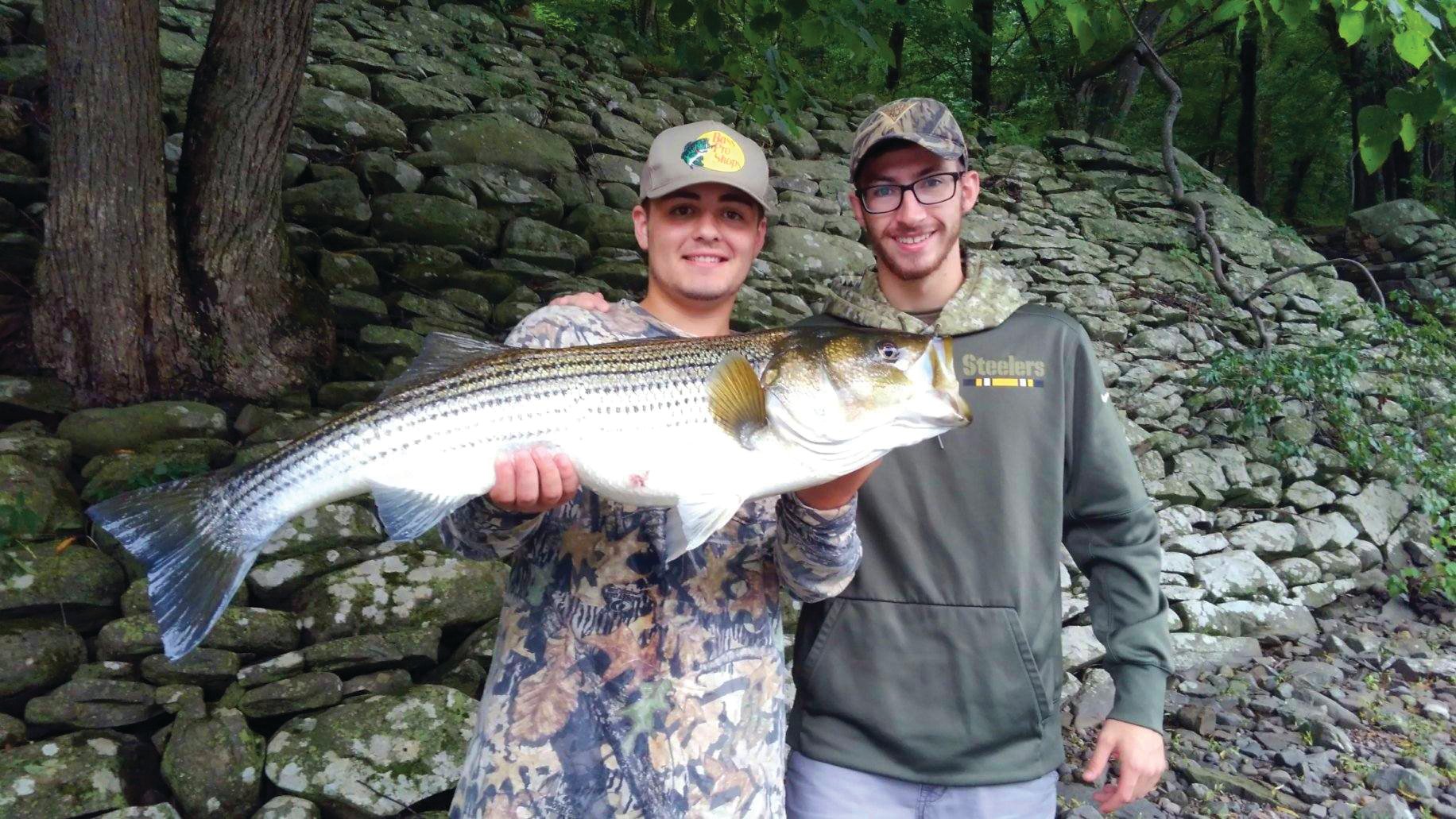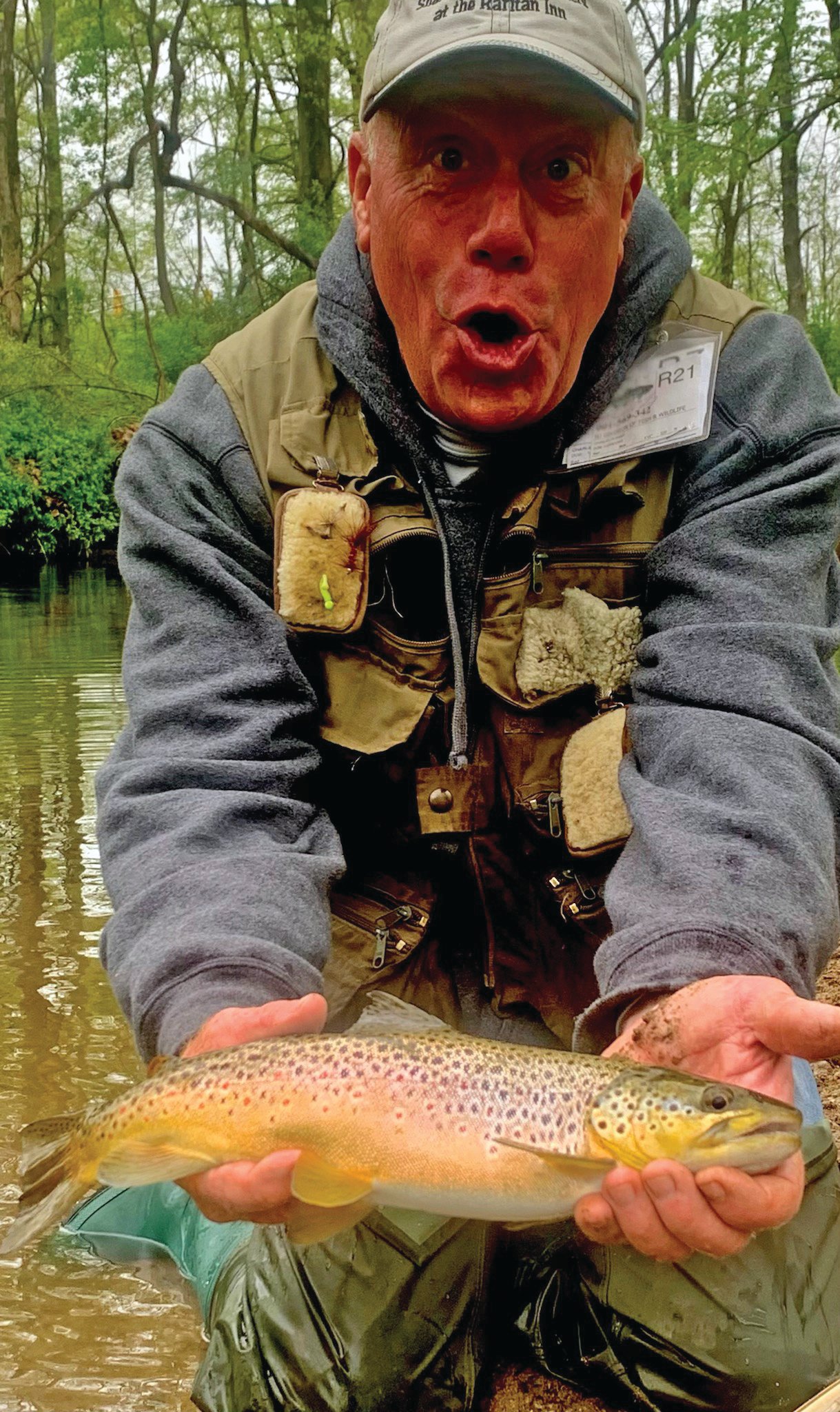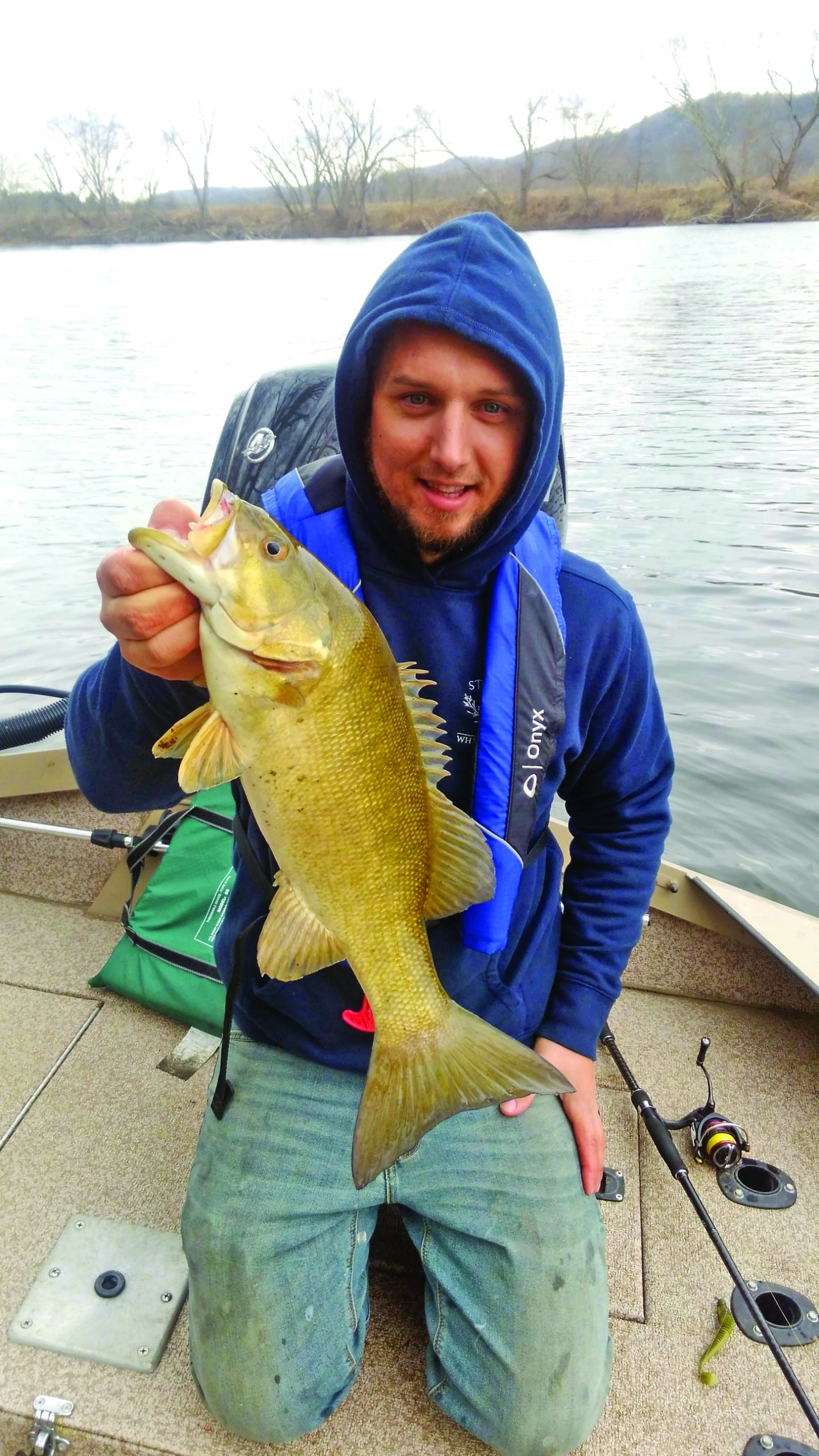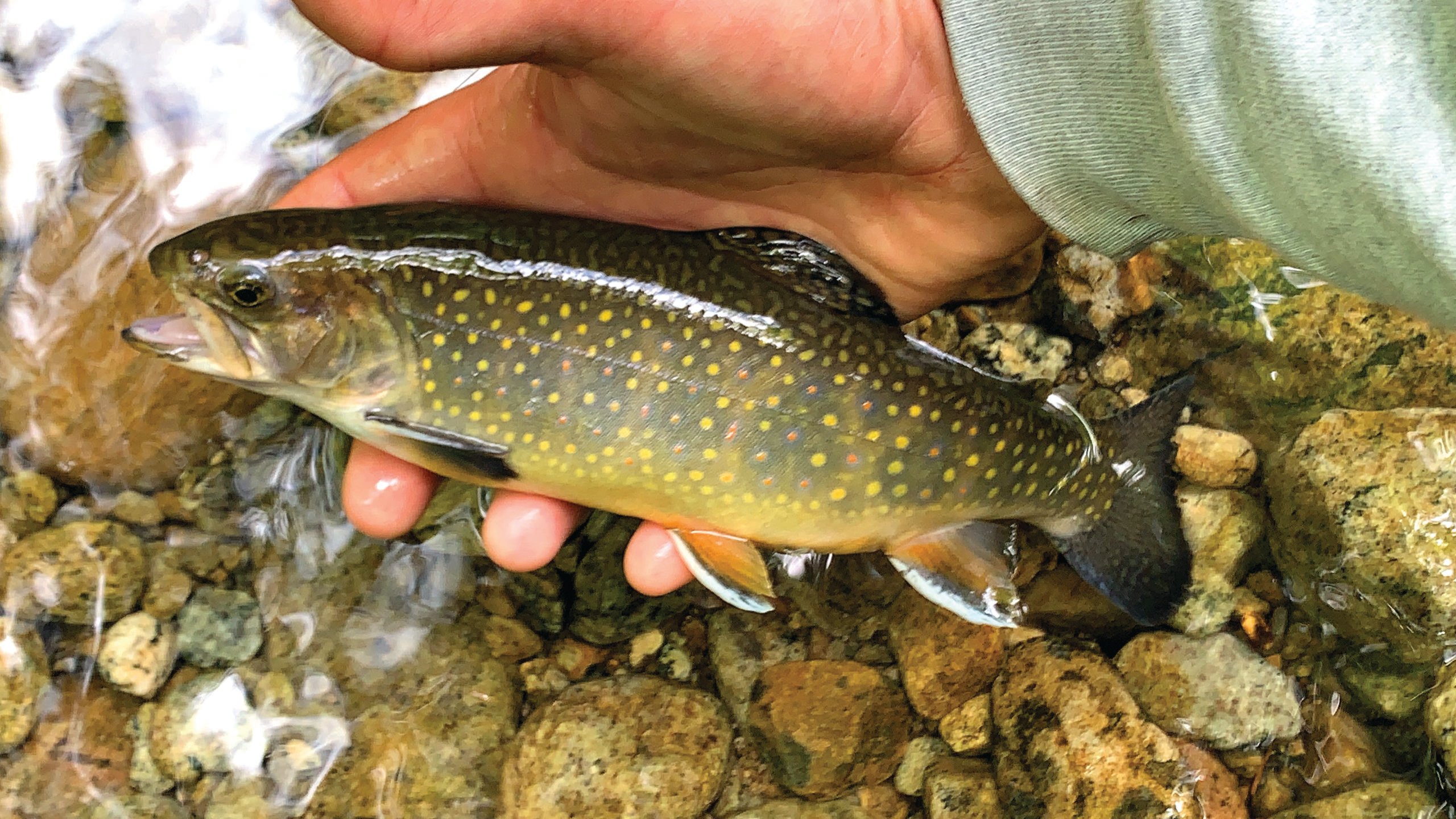
A tactical look at a local national treasure, millions of years in the making.
The Delaware Water Gap National Recreation Area, which straddles the Delaware River on both New Jersey and Pennsylvania sides, is a unique place that encompasses roughly 70,000 acres of parkland. Created where water carves its way through a mountain range – in this case, the Kittatinny Ridge of the Appalachian Mountains – on either side of this river break you’ll find mountainous terrain contain lakes, ponds and streams that evolved millions of years ago through the same geological processes that formed the gap.
The national park is an oasis for hikers, bikers, birders, campers, canoers, kayakers, and of course, anglers. The different species and methods to target them is extremely varied and provides fishermen with plentiful choice. Some of my children’s first camping experiences in Worthington State Park on the New Jersey side will forever hold a spot in my heart as we enjoyed all the Gap has to offer. Starry nights with less light pollution and the scent of evening campfires invaded our senses, but when night turned into day, we always went on the hunt for freshwater trophies!
BASS IN THE GAP
Roughly 40 miles of river run through the Delaware Water Gap; the flow is generally sluggish with rapids and riffles interspersed. For those that desire a ramp or have a small aluminum boat to launch, there are boat ramps sprinkled along each side of the river. Land access is excellent overall. The terrain can certainly be muddy, rocky or brush-lined enough to create some aggravation; however, anglers can find their way to the shoreline to cast.
Striped bass are one of the Gap’s migratory prizes that find their way into the park’s river waters. I recently caught up with Capt. Ted Metzger who ran the aptly named Delaware Water Gap Charters before turning his full attention to his tackle shop, Pike County Outfitters. He is an authority on the nuances and movements of the park’s fish and was interested to talk linesiders. “The striped bass in the Delaware Water Gap are migratory and do come up the river from the ocean; I’ve caught many with tags,” he said. “The best years are when the water temperature spikes and rises quickly. Instead of migrating back to brackish and saltwater water, they’ll get ‘boxed in’ and seek out cold water spots like deep holes and creek mouths.”
Despite more conventional thinking, summer can be excellent for striper fishing. In October when the temps slide backwards the bass will make their move back toward the sea in water temps to their liking. Just before finishing up this feature in the spring, Capt. Metzger texted me to say that all the elements were setting up just right to have an excellent summer for stripers in the Gap.
Smallmouth bass are plentiful in the Water Gap and fishing excels from May until October. According to Capt. Metzger, they show a preference to water temps in the 60-degree range and will shut down if there is a dramatic plunge. Try throwing 4- to 5- crankbaits, 5- to 6-inch Senkos, and a variety of small spinners to take smallies. Micro-sized specimens swim all over the sandy flats with baby largemouth and bluegills, but the best chance to hook fish 10 inches and up is to cast near structure such as boulders or rocks.
Casting where rapids or fast water slips into a lazy pool of swirling water will produce. Finding current eddies created by lumber, depth changes, island points or rocky features can also result in outstanding fishing. Once, I caught smallies while doing a tube trip down the river with family. I simply launched spinners toward the banks from my rented, tubular craft and managed to catch a handful.

FROM CATS TO WALLEYE
Channel catfish are prominent in the river at the Gap. Spring through fall are the prime months. Early morning, evening and at night are favored times for drowning chicken livers and chunked fish baits. Deeper pools below shallow runs are prime for weighted baits that remain stationary and allow the catties to use their olfactory senses to hone in. Capt. Metzger said anglers shouldn’t be surprised to catch cats in the riffles and rapids. “The channel catfish are hunters and more aggressive than people realize,” he said. “They can be found within shallow rocks and runs where one would least expect them.” Although most catfish are modest in size, they can creep into the 40-pound range.
While many don’t think of wild brown trout as far south as the Delaware Water Gap, they have a remarkably solid, river presence. “On a big rainfall event, they’ll search out where creeks dump out cold water,” the owner of Pike Creek Outfitters said enthusiastically. “Sometimes they’ll even go up the small creek a little bit and get piled up into pools, but when the water recedes, the trout too will fall backward and retreat.” Capt. Metzger’s largest Delaware Water Gap brown is 25 inches, and he suggested nightcrawlers and blade baits for spin fishermen. July and August can be good months to target them, in addition to spring and fall.
And then there are muskies that are taken in the Delaware Water Gap in large part due to a robust stocking program by New Jersey. The fish that survive being prey as juvenile fish conversely grow to substantial size and supply a thrill for anglers targeting them, in addition to those who catch them by surprise. Large shiners are the best bait while large spinner baits and spoons draw intense strikes. Capt. Metzger prefers no wire leader despite musky’s ability to slice line with their toothy grin. He’s more concerned with obtaining the strikes that come more frequently when leaving the visual deterrent off the presentation. The only downside is if a musky completely inhales the bait, there is a reasonable chance the fish will be lost to a cut line.
Walleye have continued to gain notoriety in the Gap, again thanks to a vigorous stocking program which has paid dividends with good numbers of fish being caught in the 14- to 16-inch range and specimens 18 to 22 inches in length not uncommon. December until March are the best months to fish pools and holes where walleye congregate. “Cold water is good and will help concentrate their numbers more and they’ll seek out the best eddies and holes. There they feed on various forage including baby lampreys,” Capt. Metzger said, adding “Recent years have been warmer so there has been less ice and the pressure has increased.”
Anglers should expect to see some folks on the water for this once, lesser-known fishery that has steadily gained attention. “Swimbaits, Mister Twisters and shiners jigged near the bottom produce,” he said. “Walleye are very light sensitive so dirty water can actually help. At night, they sometimes move into the shallows and can be caught on stick baits.”
Shad of course are a Delaware River staple, and as expected, they can be caught in the confines of the Gap. April and May are typically the best months for shad provided major weather events like flooding rains don’t throw a monkey wrench into the fishing.

FISHING STREAMS & PONDS
The Delaware Water Gap is home to numerous streams that traverse all kinds of topography. Some require climbing hilly or mountainous terrain amongst boulders that create tricky footing. The settings are aesthetically beautiful. Rhododendrons and hemlocks line the water’s edge helping to keep the water cool and hospitable for wild trout that reproduce naturally within the stream. Rocks and boulders dropped by glaciers meander within the clear waters helping create the soothing sound of running water. Some of the creeks flow through chasms with steep, rocky walls on either side. These are Water Gap gems since they evoke a feeling of isolation with you, the trout and nature.
Mostly 4- to 10-inch native brook trout and wild brown dominate the creeks, but larger fish up to 20 inches can be encountered time to time. Generally, the larger fish are brown trout versus the brookies. Most streams are “Class A” runs that require barbless hooks and artificial bait presentations versus live or synthetic baits. New Jersey and Pennsylvania State fishing websites are the best source to learn each stream and highlight the different regulations for each.
Hip waders are helpful because changing sides of the creeks is necessary to ascend or descend while casting lures and flinging flies. Chest waders are cumbersome when hiking vertical streams and often they aren’t needed anyway. Weekends can get crowded in the summer and unfortunately lead to swimmers bathing in some of the best pools, even if prohibited on some of the streams. Anglers that hit the water at dawn face less distractions.
Some wild trout streams receive stocked fish in addition to having naturally reproducing fish. The Flatbrook and Brodhead are examples of Gap waters that maintain a wild population, but are stocked by their states. Both have excellent access and can be fished easily in some areas while requiring a more moderate effort in others.
Small stream fishing for trout thrives from March until January, but viable fishing can still take place in the dead of winter as long as lures can be presented. Spin fishermen are best to carry short rods that are more functional within dense foliage. Anglers should line reels with 4 pound test and cast trout magnets, Johnson 1/8-ounce Sprites and Mepps Spinners to catch the naturally-reproducing trout. Casting upstream and working presentations backward is the best method, with casting from 90 degree angles on the side as second best. Backpacks are best to include some bear spray in case one of the park’s black bears decides to hold a meet and greet.
The Delaware Water Gap contains roughly 200 ponds and lakes that range from tiny to 35 acres. Many were created with agricultural purpose in mind in contrast to those that were formed by geological creation. The average lake contains largemouth bass, grass pickerel, bluegills and catfish. The three Blue Mountain Lakes are eye-appealing opportunities to catch largemouth and stocked rainbows along with panfish. Crater Lake, Long Pine Lake and Hemlock Pond are certainly worth a cast. Sunfish Pond is highly acidic and holds mostly pumpkin seed sunfish and yellow perch. Though not a stellar fishing destination, Sunfish Pond is a popular hike for park visitors.
Park projects and road closures are normal in the Gap and when major storms strike the area, crews try to restore function as soon as possible. Three floods that took place in 2004, 2005, and 2006 had major impacts on the park waters along with the roads and trails that access them. Heavy winds and hurricane remnants knock down trees making stream hikes more difficult while perhaps creating new habitat for fish via the pools that form adjacent to the lumber.
Whether it’s baby brookies or massive muskies, include the Delaware Water Gap on your list of accessible destinations. You won’t be disappointed.
TRIP PREP
When packing tackle for the Delaware Water Gap it’s advisable to bring gear for most species. Folks are generous in the park and sometimes you’ll get a tip to fish for a species you hadn’t planned on targeting. And although being prepared for the variety seems daunting, it won’t take too much space up in the pick-up bed or trunk.
Pike Creek Outfitters: 570-296-9492
Adventure Sports (Canoe rentals): 570-223-0505
KOA Delaware Water Gap (Camping): 570-223-8000





